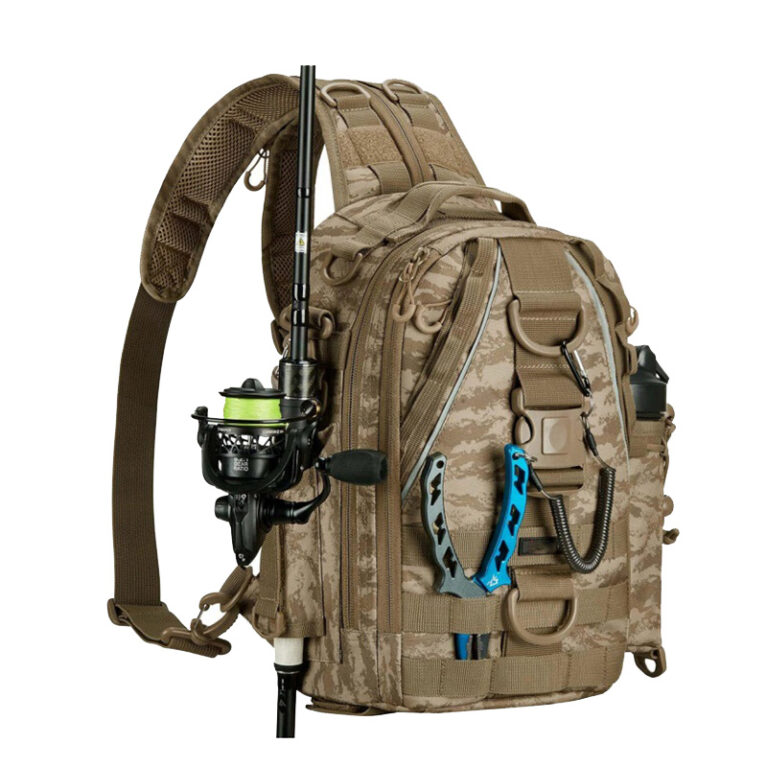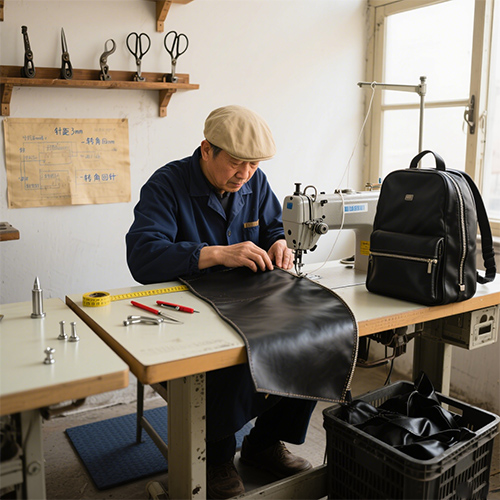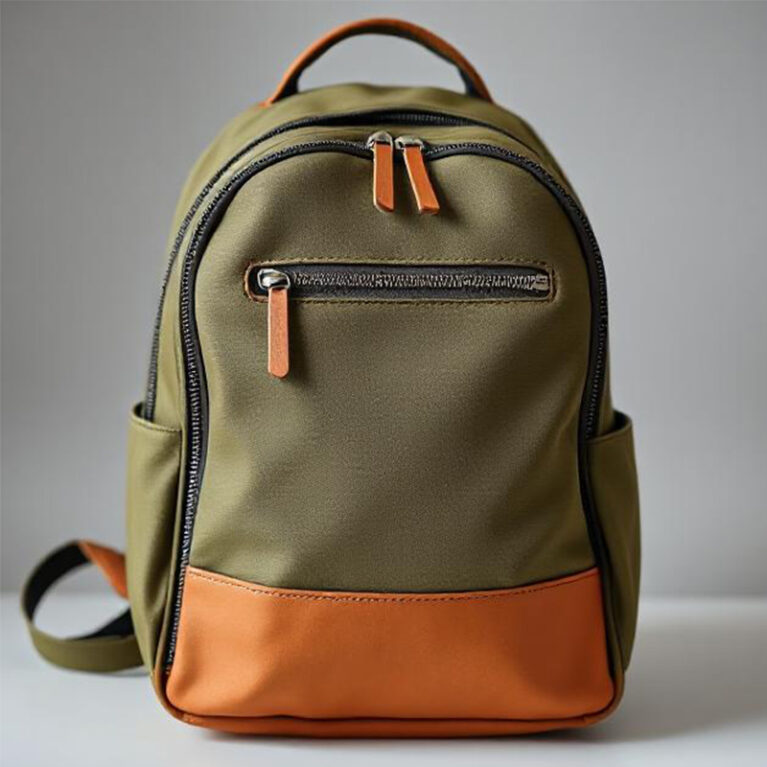Outdoor backpacks are indispensable equipment for people hiking and traveling in outdoor and natural environments, and are mainly used to carry essentials such as food, clothing and tools. For different usage scenarios, especially for long time outdoor activities, a reasonable backpack design is decisive to enhance the traveling experience.
The core outdoor backpack structure system consists of three main parts: the carrying system, the loading system and the mounting system. Among them:
1. The carrying system is the key structure connecting the backpack and the human body, realizing the even distribution of the load through three-dimensional mechanics, reducing the pressure on the human body, and enhancing comfort and efficiency;
2. The loading system determines the spatial layout and access efficiency of the items;
3. The mounting system is responsible for the expansion and fixation of the external equipment, which affects the stability of the extra load and the convenience of carrying.
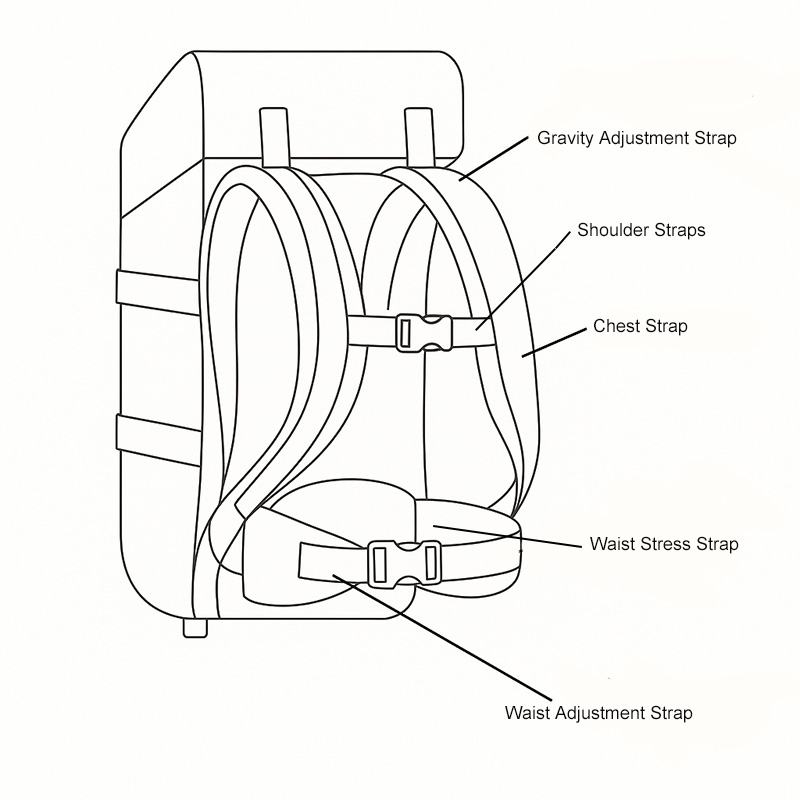
This article focuses on the structural design of the adjustable outdoor backpack, focuses on the innovative research of the above three systems, aims to optimize the load distribution, and provides theoretical and technical support for the development of new backpacks. I hope this helps some outdoor backpack manufacturers.
Three core systems of outdoor backpack structure system and design innovation
1. Carrying system design analysis
The carrying system mainly consists of internal rigid back plate, shoulder straps, waist belt, chest belt, center of gravity adjustment belt and other components, adopting ergonomic principles and high resilience materials to enhance the comfort of load bearing.
The structural form has undergone many generations of iterative development, and nowadays it is common to see V-type, inverted U-type and other forms. The back plate designed in this paper adopts the symmetrical layout of upper and lower wide and narrow, perforated and hollowed out, which improves the heat dissipation effect.
The system consists of “five belts and three devices”:
Five belts: shoulder belt, center of gravity adjustment belt, chest adjustment belt, lumbar force belt, lumbar bottom adjustment belt;
Three devices: support device, adjustment device, breathable device.
| Category | Component | Function / Feature |
| Five Straps | Shoulder Straps | Main load-bearing straps; feature perforated ventilation structure for breathability. |
| Load Adjustment Straps | Adjust the backpack’s center of gravity for better balance and stability. | |
| Chest Adjustment Strap | Helps secure shoulder straps; outward-angled layout improves force distribution. | |
| Waist Support Strap | Transfers weight to the hips; includes a hollow breathable design. | |
| Lower Waist Adjustment Strap | Fine-tunes fit around the lower waist for better comfort and support. | |
| Three Devices | Support Device | Provides structural support through internal frame or back panel. |
| Adjustment Device | Allows size and fit customization (e.g., “infinite quick-insert” adjustment slots). | |
| Ventilation Device | Enhances airflow via perforations and honeycomb sweat channels for heat dissipation. |
Design highlights include the perforated ventilation structure of the shoulder straps, the outer eight force-conducting layout of the sternum strap, the breathable design of the lumbar cutout structure, and the honeycomb cutout sweat-conducting channels on the back panel.
These greatly enhance the breathability and stability of the backpack. In addition, the “infinitely fast insertion” adjustment gear is set for people of different heights to realize personalized adjustment.
2. Loading system design analysis
The loading system is responsible for the storage and distribution of goods, and its scientific structure affects the use efficiency and stability of the center of gravity. The design of this paper adopts the multi-module combination of main bag, top bag, side bag and attached bag:
The main bag is layered at the top and bottom, which is convenient for categorized storage;
The top bag is located at the top, suitable for storing commonly used small items;
Side bags are convenient for hanging and accessing objects;
The attached bag is detachable and can be used independently to enhance the functional diversity.
3. Mounting system design analysis
The hanging system is set on both sides of the backpack, including the top, side and bottom hanging structures, and adopts the combination of point hanging and strip hanging, which is suitable for external hanging of hiking poles, tool kits and other accessory equipments.
The front of the pack is designed with a horizontal webbing structure that provides multiple attachment points. Both sides and bottom of the pack are equipped with adjustable external hangers, and external hangers are also provided on both sides of the waist belt.
The webbing of each part is well laid out to avoid interference and enhance the expansion capability and load balance.
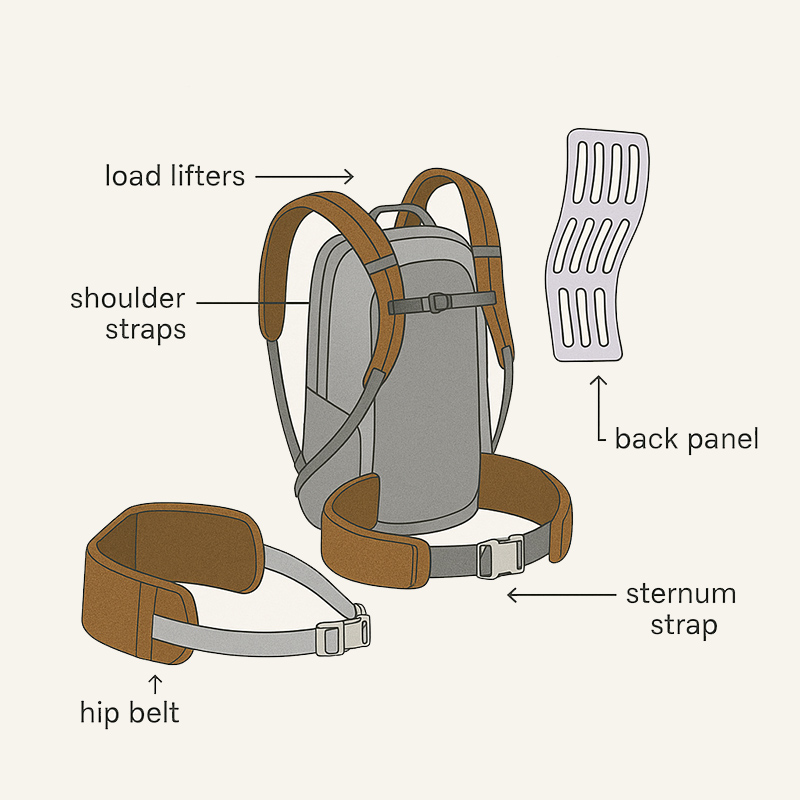
We have analyzed the design of the outdoor backpack structure system above: the back system, the loading system, and the mounting system. The purpose is to comprehensively improve the comfort, stability, adjustability, fit, ventilation and lightweight performance of the backpack.
The pressure distribution of the backpack is dominated by the lumbar back area (60%~70%), followed by the shoulder and neck (20%~30%), while the chest bears 10%~20%. Reasonable collaboration of shoulder straps and waist belt can effectively relieve shoulder load and reduce fatigue.
Despite the practicality of the overall structural design, there are still deficiencies, such as the lack of ergonomic test data validation, and some of the designs, such as the shape and curvature of the back panel, are still in the conceptual stage.
Future research should enhance ergonomic tests, such as surface EMG tests and user feedback, to further optimize the backpack system and back pad design.
In addition, the expansion and integration of the carrying function of the device is also worthy of in-depth exploration to meet the future outdoor needs under multi-scene and multi-task.



